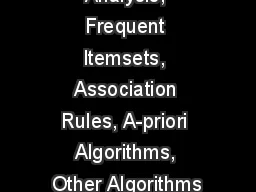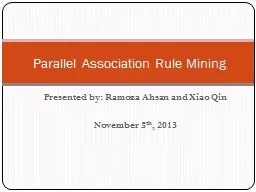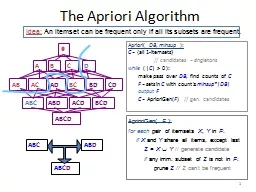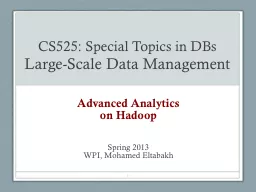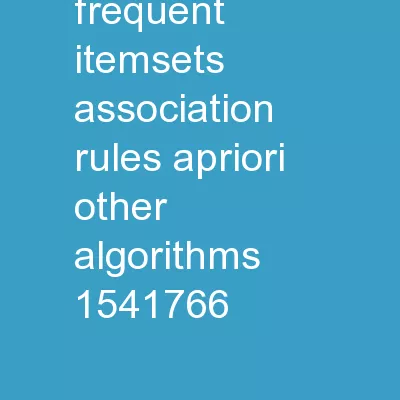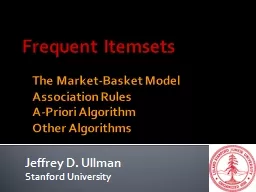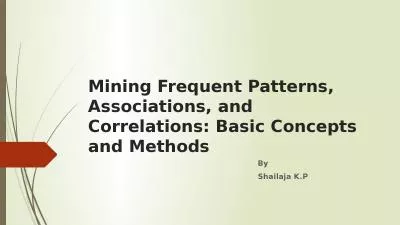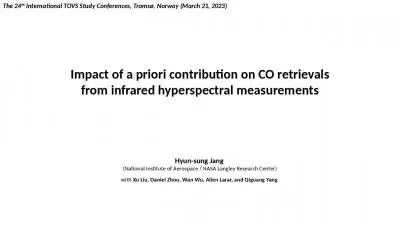PPT-Market Basket Analysis, Frequent Itemsets, Association Rules, A-priori Algorithms, Other
Author : jane-oiler | Published Date : 2020-04-08
What Modelling technique which is traditionally used by retailers to understand customer behaviour It works by looking for combinations of items that occur together
Presentation Embed Code
Download Presentation
Download Presentation The PPT/PDF document " Market Basket Analysis, Frequent Itemse..." is the property of its rightful owner. Permission is granted to download and print the materials on this website for personal, non-commercial use only, and to display it on your personal computer provided you do not modify the materials and that you retain all copyright notices contained in the materials. By downloading content from our website, you accept the terms of this agreement.
Market Basket Analysis, Frequent Itemsets, Association Rules, A-priori Algorithms, Other: Transcript
Download Rules Of Document
" Market Basket Analysis, Frequent Itemsets, Association Rules, A-priori Algorithms, Other"The content belongs to its owner. You may download and print it for personal use, without modification, and keep all copyright notices. By downloading, you agree to these terms.
Related Documents

